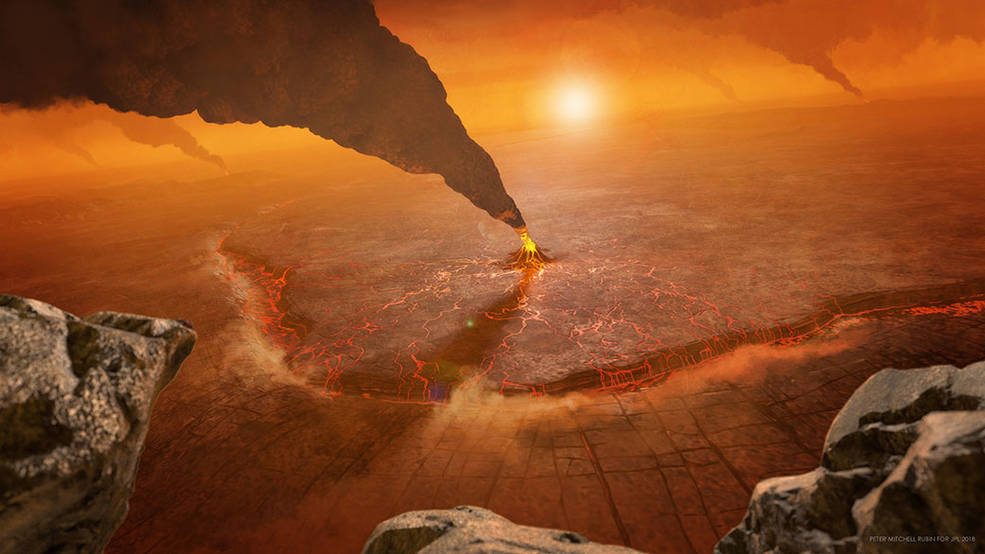
Less than a month ago, scientists were unsure if Venus had active volcanoes. Now, a new map reveals that there could be at least 85,000 of them covering the surface of the hellish planet.
Until recently, experts believed that Venus was probably a geologically dead planet that was incapable of volcanic eruptions. In the past, scientists identified thousands of volcanoes on Venus, as well as coronas — flattened volcano-like features covered in solidified lava. The planet has a gooey flowing mantle beneath its outer crust, and its atmosphere is rich with carbon dioxide and sulfur, indicating that the planet had a volcanic past. However, Venus no longer has any tectonic plates, which play a key role in volcanic activity and major eruptions on Earth. For that reason, scientists deemed it unlikely that any of the Venusian volcanos were currently or had recently been active.
But on March 15, researchers published a reanalysis of data collected during NASA's Magellan mission that orbited a probe around Venus between 1989 and 1994. The data revealed the first evidence of recent volcanic activity on Venus, after the researchers spotted traces of a volcanic eruption that occurred in 1991. Prior to this, on Feb. 23, another group of researchers using the Magellan data showed that the planet's outer crust was much thinner and more "squishy" than previously realized, which suggested magma could still make it onto the planet's surface through coronas.
In a new study published March 24 in the Journal of Geophysical Research: Planets, researchers, inspired by the recent discoveries on Venus, created a new map of the planet's surface highlighting every potential volcano. To do this, they used a computer program to look at Magellan’s data for signs of volcanoes. They spotted at least 85,000 volcanoes, although the team doesn't know if they are active, dormant or geologically dead. (For context, there are 1,350 potentially active volcanoes on Earth, although this does not include volcanically dead cones, and more undiscovered volcanoes likely lurk beneath Earth's oceans.)
Related: Alien life on Venus? No chance, says new NASA study

The new map is "the most comprehensive map of all volcanic edifices on Venus ever compiled," study co-author Paul Byrne, a planetary scientist at Washington University in St. Louis, said in a statement.
Around 99% of the volcanoes on the map are quite small — less than 3.1 miles (5 kilometers) wide. This makes them hard to differentiate from their surroundings, which is why so many had gone unnoticed until now, researchers wrote in the paper. Many of these small volcanoes are clumped into groups, called volcanic fields, but it is unclear why this has happened.
The researchers believe there could be more, even smaller volcanoes less than 0.6 mile (1 km) across that do not show up on their map. The true number of cones on the Venusian surface could be in the hundreds of thousands, study lead author Rebecca Hahn, a doctoral student at Washington University in St. Louis, said in the statement.

Future missions to Venus, including NASA's VERITAS mission, which is scheduled to launch in December 2027, and the European Space Agency's EnVision mission, which is scheduled to launch in the early 2030s, will provide new high-resolution images that could help find these potential hidden mini-volcanoes, she added.
The researchers hope their new map t can be used by other researchers to predict future eruptions and to learn more about the planet's volcanic past and present.
"We've already heard from colleagues that they’ve downloaded the data and are starting to analyze it, which is exactly what we want," Byrne said. "I'm excited to see what they can figure out with the new database."







